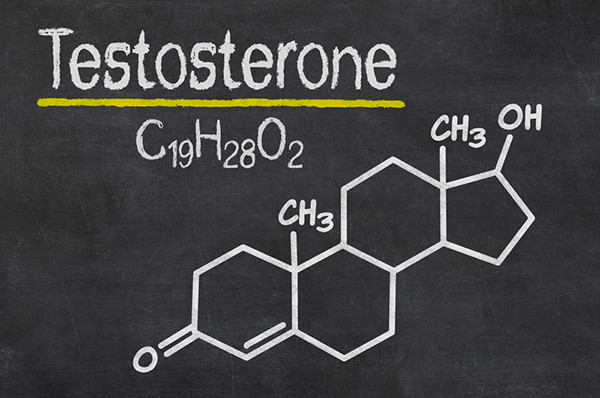- Main Page
- A1C Test
- Advance Directives
- Anxiety
- Aortic Aneurysm
- Aphrodisiacs
- Apple Cider Vinegar
- Arrhythmia
- Atrial Fibrillation - AFib
- Back Pain
- Blood Tests
- Blood Test Tubes
- Blood Types
- BMI Calculator
- Body Mass Index - BMI
- Bone Scan
- BPPV
- Bronchitis
- Cancer - Lung
- Carbohydrates
- Cardiac Catheterization
- Cardiovascular Disease
- Caregiver Glossary
- Caregiver Resources - LGBTQ+
- Caregiver Resources - MO
- Caregiver Resources - USA
- Continuous Glucose Monitors
- Cholesterol
- Citalopram
- COPD
- Coronary Artery Disease
- Cough
- CPAP
- CT scan
- Cyclobenzaprine
- Degenerative Disc Disease
- Depression
- Diabetes Information
- Diabetes - Type 1
- Diabetes - Type 2
- Diabetes - Type 3c
- Diabetes Facts
- Diabetes Care
- Diabetes Care Team
- Diabetes & Fruits
- Diabetes - Gestational
- Diabetes - Pre
- Diabetic Terms
- Diabetes & Vegetables
- Diet - Boiled Egg
- Diet - DASH
- Diet - Fat Burning
- Diet - Mediterranean
- Diet - Military
- Disability
- Disability Permits
- Do Not Resuscitate
- Dupixent®
- Echocardiogram
- Electrocardiogram
- Electromyography
- Emphysema
- Epidural - Lumbar
- Epidural - Transforaminal
- Epsom Salt
- Facet Arthropathy
- Farxiga®
- Flu - Influenza
- Fluoroscopy
- Gabapentin
- GERD
- Glycemic Index
- Gout
- Headaches
- Healing & Energy Work
- Health Facts
- Health Info. Lines
- Heart Attack
- Heart Disease - Other
- Heart Failure
- Heart Imaging Tests
- Herbal Terms
- Herbal Medicine
- Herb & Oils Uses
- Herniated disk
- HIPAA
- Home Remedies
- Humalog®
- Hydrogen Peroxide
- Hyperglycemia
- Hyperkalemia
- Hyperlipidemia
- Hypertension
- Hypoglycemia
- Hypokalemia
- Hypotension
- Important Numbers
- Indomethacin
- Informed Consent
- Inhalers
- Insomnia
- Insulin
- Juice Fasting
- Juice Recipes
- Kidney Cysts
- Kidney Disease
- Lantus®
- Lemon Benefits
- Lime Benefits
- Liver Disease
- Lumbar Retrolisthesis
- Medicaid
- Medical Specialties
- Medicare
- Medicare - Your Rights
- Melatonin
- Men's Health
- Mental Health
- MO HealthNet
- Mounjaro®
- MRI Scan
- Myelography
- Naproxen
- Nasal Polyps
- Nuclear Medicine
- Nutrition - Adults
- Nutrition - Adults, Older
- Nutrition - Kids
- Obesity
- Otolaryngologist
- Oxycodone-Acetaminophen
- Pain Management
- Peripheral Artery Disease
- Parking Spaces
- PET/CT Scan
- PET Scan
- Potassium
- Prescription Drugs
- Prurigo Nodularis
- PVC's
- Quetiapine
- Quit Smoking
- Radiculopathy
- Red Yeast Rice
- Reiki
- Salt & Sodium
- Salt Water Flush
- Sciatica
- Service Animals
- Sleep Apnea
- Sleep Disorders
- Sleep Studies
- SPECT Scan
- Spinal Stenosis
- Statins
- Stents
- Stress Test - Exercise
- Stress Test - Nuclear
- Sugars - Sweeteners
- Support Groups
- Tardive Dyskinesia
- Testosterone
- Trazodone
- Ultrasound
- Vaccines 19 and up
- Vaccines by Age
- Vaccines 0-6 yrs
- Vaccines 7-18 yrs
- Ventricular Fibrillation
- Vertigo
- Vital Records
- Vital Signs
- Vitamin B12
- Vitamin C
- Vitamin D
- Vitamin E
- Vitamin F
- Vitamin K
- Vitamins and Minerals
- Vitamins Recommended
- Water Benefits
- X-Rays
Needed to read PDF's
Testosterone
What is testosterone?

Testosterone is a sex hormone. Hormones are the body's chemical messengers. They travel from one organ or another place in the body, usually through the bloodstream, and affect many different bodily processes.
Testosterone is the major sex hormone in males. It is essential to the development of male growth and masculine characteristics.
Signals sent from the brain to the pituitary gland at the base of the brain control the production of testosterone in men. The pituitary gland then relays signals to the testes to produce testosterone. A "feedback loop" closely regulates the amount of hormone in the blood. When testosterone levels rise too high, the brain sends signals to the pituitary to reduce production.
Brand names
- Jatenzo®
- Kyzatrex®
- Tlando®
Other names
- testosterone undecanoate
Is testosterone a steroid?
Natural testosterone is a steroid — an anabolic-androgenic steroid. "Anabolic" refers to muscle building, and "androgenic" refers to increased male sex characteristics.
However, when you hear people use the term “anabolic steroids” they are generally referring to synthetic (made in a lab) variations of testosterone that are injected into your body.
Healthcare providers use synthetic testosterone to treat and manage various medical conditions.
Synthetic testosterone is the main drug of masculinizing hormone therapy.
Some athletes and bodybuilders misuse synthetic testosterone (anabolic steroids) by taking very high doses of them in an attempt to boost performance or change their physical appearance. Misuse of these drugs can cause several unpleasant symptoms and lead to long-term dangerous health problems, including blood clots, stroke, and potentially increase the risk of prostate cancer.
What does testosterone do?
Testosterone has different roles in different life stages, including:
- Fetal development.
- Puberty for male children.
- Adulthood.
Testosterone and fetal development
At around week seven in utero, the sex-related gene on the Y chromosome initiates the development of the testicles in male infants. The testicles produce testosterone.
Testosterone triggers the development of the male internal and external reproductive organs during fetal development.
Testosterone and puberty
Testosterone is responsible for many of the changes seen in pubescent males, including:
- An increase in height.
- Body and pubic hair growth.
- Enlargement of their penis, testes and prostate gland.
- Increasing libido (sex drive).
Testosterone and adult males
Testosterone is essential for the production of sperm. It also:
- Signals your body to make new red blood cells.
- Ensures that your bones and muscles stay strong.
- Enhances libido (sex drive) and a sense of well-being.
Testosterone and adult females
For adult females, testosterone enhances libido. However, the majority of testosterone produced in the ovaries is converted to the primary female sex hormone, estradiol.
How are testosterone levels controlled?
Your body controls the levels of testosterone in your blood. Levels are usually highest in the morning and decline during the day.
Your hypothalamus and pituitary gland control the amount of testosterone your gonads (testicles or ovaries) produce and release.
Your hypothalamus releases gonadotropin-releasing hormone (GnRH), which triggers your pituitary gland to release luteinizing hormone (LH). LH then travels to your gonads and stimulates the production and release of testosterone. (LH more often stimulates the production of estrogen and progesterone in ovaries.)
As testosterone in your blood increases, it suppresses the production of gonadotropin-releasing hormone, which helps maintain normal levels of testosterone.
If any of these organs — your hypothalamus, pituitary gland or gonads — aren’t working normally, that can cause abnormal testosterone levels.
What tests measure testosterone levels?
If your healthcare provider suspects you may have irregular testosterone levels, they may order one or more tests, including:
- Total testosterone blood test (this is usually performed in the morning since testosterone levels are highest then).
- Follicle-stimulating hormone (FSH) blood test.
- Luteinizing hormone (LH) blood test.
What are normal testosterone levels by age?
The two charts below list the general normal ranges of testosterone based on age and sex. The level is measured in nanograms per deciliter (ng/dL).
It’s important to note that the normal ranges for testosterone levels can vary based on the type of blood test done and the laboratory where it is done. Your provider will always reference your laboratory’s normal ranges when interpreting your results. Talk to them if you have questions.
Normal testosterone levels for males:
| Age range | Normal testosterone range |
| Under 1 year old. | Less than 12 ng/dL. |
| 1 to 5 years old. | Less than 12 ng/dL. |
| 6 to 10 years old. | Less than 25 ng/dL. |
| 11 to 15 years old. | Less than 830 ng/dL. |
| 16 to 17 years old. | 102 to 1010 ng/dL. |
| 18 to 99 years old. | 193 to 824 ng/dL. |
Normal testosterone levels for females:
| Age range | Normal testosterone range |
| Under 1 year old. | Less than 21 ng/dL. |
| 1 to 5 years old. | Less than 12 ng/dL. |
| 6 to 10 years old. | Less than 25 ng/dL. |
| 11 to 17 years old. | Less than 79 ng/dL. |
| 18 to 99 years old. | Less than 40 ng/dL. |
What causes high testosterone levels?
Several conditions can cause your body to produce too much testosterone, including:
- Polycystic ovarian syndrome (PCOS): This is a hormonal imbalance that affects people with ovaries. It happens when the ovaries create excess androgens (testosterone). This imbalance in reproductive hormones causes physical symptoms like excess body hair and weight gain.
- Congenital adrenal hyperplasia: In CAH, genetic mutations (changes) cause shortages of enzymes in the adrenal gland. These enzymes normally help the body to produce cortisol, a hormone the body needs to respond to stress. When the enzymes don’t work normally, the adrenal glands produce an excess of testosterone and other hormones instead of cortisol.
- Ovarian or testicular tumors: Androgen-producing ovarian and testicular tumors can release excess testosterone.
- Adrenal tumors: Sex-hormone-producing adrenal tumors are rare tumors that make too much androgen (testosterone), estrogen or both.
Excess testosterone affects your body differently depending on your sex and age.
High levels of testosterone in males
It’s unlikely — and difficult to tell — that a male adult has higher-than-normal levels of testosterone.
Excess testosterone in male children can lead to precocious (early) puberty, which is when puberty begins before the age of nine.
High levels of testosterone in females
High levels of testosterone in female infants may lead to enlargement of their clitoris that can look almost like a penis. It can also lead to precocious (early) puberty, which is when puberty begins before the age of eight.
In female adults, high levels of testosterone may be a sign of polycystic ovary syndrome (PCOS). This condition is very common — up to 15% of females of reproductive age have it.
PCOS causes certain symptoms, including:
- Acne.
- Excess body and facial hair (hirsutism).
- Irregular menstruation (periods).
- Balding at the front of your hairline.
- Deeper voice.
What happens when testosterone levels are too low?
Lower-than-normal testosterone levels typically only cause symptoms in males. This condition is called male hypogonadism.
There are two main types of male hypogonadism: classical (congenital or acquired) and late-onset.
Classical male hypogonadism is when low testosterone levels are due to an underlying medical condition or damage to your testicles, pituitary gland or hypothalamus. For example, a person can be born with a condition (congenital) that leads to low testosterone, such as Klinefelter syndrome or Kallmann syndrome, or they can develop it later (acquired), such as from an something that changes the normal functioning of their testicles, hypothalamus or pituitary gland.
Late-onset male hypogonadism happens when the decline in testosterone levels is linked to general aging and/or age-related conditions, particularly obesity and Type 2 diabetes. Late-onset hypogonadism affects about 2% of men over the age of 40.
The symptoms of low testosterone vary based on your age.
Low testosterone in fetal development
Testosterone deficiency during fetal development doesn’t allow male characteristics to develop normally. This is called androgen insensitivity syndrome (AIS) and occurs when someone is genetically male but is insensitive to androgens (male sex hormones).
AIS is a disorder of sex differentiation. It affects male fetuses as they develop in the uterus, as well as teenage sexual development during puberty. AIS prevents male genitals from developing as they should and almost always results in infertility (it’s difficult or impossible to father children) during adulthood.
Low testosterone in puberty
For male children, testosterone deficiency during puberty can result in the following:
- Slowed growth in height, but their arms and legs may continue to grow out of proportion with the rest of their body.
- Reduced development of pubic hair.
- Reduced growth of their penis and testicles.
- Less voice deepening.
- Lower-than-normal strength and endurance.
Low testosterone in adults
Testosterone levels in males naturally decline with age. However, adult males can experience even lower testosterone levels, which can lead to the following:
- Unexplained reduction in muscle mass and an increase in body fat.
- Loss of body hair.
- Depressed mood.
- Erectile dysfunction.
- Low sex drive.
- Osteoporosis (weak bones).
- Difficulty with concentration and memory.
Testosterone therapy
Testosterone therapy is approved for the treatment of delayed male puberty and abnormally low production of testosterone secondary to malfunction of the testes, pituitary or hypothalamus.
Men may be eligible for testosterone therapy when they have significantly low levels of active (free) testosterone and symptom such as:
- generalized weakness
- low energy
- disabling frailty
- depression
- problems with sexual function
- problems with cognition.
However, many men with normal testosterone levels have similar symptoms, so a direct connection between testosterone levels and symptoms is not always clear. As a result, there is some controversy about which men should be treated with supplemental testosterone.
Testosterone therapy may make sense for women who have low testosterone levels and symptoms that might be due to testosterone deficiency. However, the wisdom and effectiveness of testosterone treatment to improve sexual function or cognitive function among postmenopausal women is unclear.
Forms of Testosterone Supplements
Testosterone replacement therapy comes in several forms. All can improve testosterone levels:
Transdermal patch
This is a skin patch worn on the arm, upper body, or another place where you're not likely to sweat or apply pressure (like lie on it). The patch is applied once a day between 8 p.m. and midnight. You'll need to choose a different spot to apply it each time. Wait 7 days before going back to a spot you already used.
Testosterone gel
This may come in a foil packet or from a pump or twist-off bottle. Testosterone is absorbed directly through the skin when you apply the clear gel once a day. You usually rub this on your shoulders, upper arms, or thighs, depending on the instructions on the medication. Let the gel dry before you put clothes on top of it. Be careful about letting children or female loved ones touch the treated area or touch unwashed clothes that were in contact with the gel, as testosterone may get transferred to them.
One type of gel is applied to the inside of your nose via a dispenser pump. You usually apply this three times a day in each nostril, 6 to 8 hours apart. Don't blow your nose or sniff for 1 hour after using this nasal gel.
Testosterone mouth patch
This may look like a pill, but it sticks to your upper gums. Apply this patch by pushing it against your gums and to the left or right of your front teeth. Keep it in place by pushing on it from the outside of your mouth as well. The patch continuously releases testosterone into the blood through the oral tissues. Replace it after 12 hours, switching to the other side of your mouth.
Testosterone shots
A nurse or technician may give you testosterone as a shot directly into a muscle. You can also learn how to give the shot to yourself at home. You'll be shown which body parts you can use for the injection site, as they need to be rotated. The shot is usually given once a week.
Testosterone implants
A health care provider inserts these pellets under your skin (usually in the buttocks area) every 3 to 6 months. They do this by making a small cut in your skin and using a special tool to implant 10 pellets of testosterone. Your body slowly absorbs the testosterone into the bloodstream.
Oral testosterone
Why not a simple testosterone pill? Oral testosterone has been around since the 1980s but was not popular because it can cause problems for the liver. But there are now some new pills (Jatenzo, Tlando, and Kyzatrex) that bypass the liver and get testosterone into the blood directly, in the same way that skin patches, gels, and other treatments do. You usually take the pill twice a day with food.
One downside is that these pills are expensive and may not be covered by insurance, unless you've tried other methods of treatment and had no success or bad side effects.
Risks of testosterone therapy?
Some men and women experience immediate side effects of testosterone treatment, such as acne, disturbed breathing while sleeping, breast swelling or tenderness, or swelling in the ankles. Doctors also watch out for high red blood cell counts, which could increase the risk of clotting.
Testosterone therapy does not appear to increase the risk of prostate cancer, but it can stimulate the growth of prostate cancer cells. Because prostate cancer is so common, doctors tend to be leery of prescribing testosterone to men who may be at higher than average risk of having undiagnosed prostate cancer.
For men with low blood testosterone levels and symptoms most likely caused by a low level, the benefits of hormone replacement therapy usually outweigh potential risks. However, for most other men it's a shared decision with your doctor.
Testosterone Replacement vs. Performance-Enhancing Steroids
Some bodybuilders and athletes illegally take anabolic steroids to build muscle mass or to enhance their athletic abilities. (The word "anabolic" refers to body-building tissue). These steroids usually contain testosterone or chemicals that act like testosterone. So how does this differ from TRT?
The biggest difference is that the doses of testosterone used in TRT are small, designed to achieve natural levels of the hormone in the blood. The doses used by some athletes are as much as 10 to 100 times higher than those given medically. Also, the steroids are often combined ("stacked") with other substances like stimulants, pain relievers, and growth hormones to boost the overall muscle-building effect.
Some of the side effects of anabolic steroid abuse are:
- Increased aggression ("roid rage")
- Mood swings
- Psychotic episodes
- Higher cholesterol and blood pressure
- Liver problems
- Stunted growth in teenagers
- Acne and other skin rashes
You can also get addicted to anabolic steroids, even though they don't produce any "high."
In case of emergency/overdose
In case of overdose, call the poison control helpline at 1-800-222-1222. Information is also available online at https://www.poisonhelp.org/help. If the victim has collapsed, had a seizure, has trouble breathing, or can't be awakened, immediately call emergency services at 911.
What other information should I know?
Keep all appointments with your doctor and the laboratory. Your doctor will order certain lab tests to check your testosterone levels to see if they are low before you begin to take testosterone. Your doctor may order certain tests to check your body's response to testosterone.
Before having any laboratory test, tell your doctor and the laboratory personnel that you are taking testosterone.
Do not let anyone else take your medication. Testosterone is a controlled substance. Prescriptions may be refilled only a limited number of times; ask your pharmacist if you have any questions.
Keep a written list of all of the prescription and nonprescription (over-the-counter) medicines vitamins, minerals, and dietary supplements you are taking. Bring this list with you each time you visit a doctor or if you are admitted to the hospital. You should carry the list with you in case of emergencies.
Testosterone Replacement Therapy FAQs
What happens to your body when you start testosterone replacement therapy?
You may feel more energetic, less depressed, and have a higher sex drive. You might also notice you gain more muscle mass and lose body fat.
How long can you stay on testosterone replacement therapy?
If you stop TRT, the symptoms of low T usually come back, so you may have to stay on the drug for life – unless you decide you don't want to be treated anymore.
Does TRT raise blood pressure?
Some studies have found a link between TRT and higher blood pressure, while others have seen no effect or a link to lowered blood pressure. The effect on your blood pressure may depend on your own health, whether you have any heart disease or high blood pressure, and how much testosterone you take.
One Final Note..
Testosterone is an essential part of reproductive health. It’s natural for testosterone levels to vary depending on your age and overall health. If they’re consistently high or low, you may experience unpleasant symptoms worth discussing with your provider. Treatments are available that may help.
Testosterone is most commonly associated with sex drive in men. It also affects mental health, bone and muscle mass, fat storage, and red blood cell production.
Abnormally low or high levels can affect a man’s mental and physical health.
Your doctor can check your testosterone levels with a simple blood test. Testosterone therapy is available to treat men with low levels of testosterone.
If you have low T, ask your doctor if this type of therapy might benefit you.
Find me on Social Media
 |
Don't forget to bookmark me to see updates.. Copyright © 2000 - 2025 - K. Kerr Most recent revision November 19, 2025 10:55:42 AM
|











